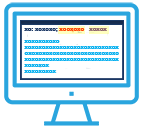Have you ever sent an email to the wrong person? Organisations around the world use email as their primary communication tool, often sending highly sensitive data in email contents and attachments. With this increasing reliance on email comes the risk of accidental data breaches – what if you sent that confidential employee data to the wrong Emma? It is such a simple mistake to make, but one that could have devastating consequences for your organisation. As well as stopping potential data breaches, SafeSend relieves the admin burden on IT Departments by reducing the amount of DLP stops at the perimeter by stopping them at the source.
Increase compliance and data protection with VIPRE SafeSend.
SafeSend is an Outlook and Web add-in used to prevent misaddressed emails or accidental autocomplete email mistakes. Protect your data before it leaves your organisation with SafeSend, by prompting your users to check their recipient and attachment lists.
Confirm external recipients
Confirm attachments
Manage settings centrally

Calls out external recipient domains in distribution lists

Scans files encrypted with Microsoft RMS (Rights Management System)

Highlights BCC and CC recipients in different colours to prevent slip ups
Full audit trail
Create a white-label version with your corporate logo and style
Easy to scale from 50 to 500,000 users
SafeSend Data Loss Prevention (DLP) Module
SafeSend with DLP further scans attachments and email content for particularly sensitive data and allows companies to build additional custom DLP rules. Using regular expressions you can detect sensitive keywords or data patterns inside the email body or attachments such as credit card numbers, bank account details or national insurance numbers.
Automatically scan email content for sensitive data
Trigger an action if sensitive data is detected
Use pattern matching to define types of personally identifiable information
Supports numerous file types
Once a DLP rule is triggered you can set the system to perform one of four possible actions:
INFORM: alert the user of the sensitive content, no action needed
CONFIRM: the user must tick the box to confirm they have seen the notification
TYPE CONFIRM: the user must type the word CONFIRM to more thoroughly acknowledge they are aware of the sensitivity of the data
DENY: the user is unable to send out the sensitive data and must click cancel or contact their IT Administrator
